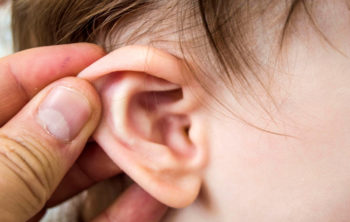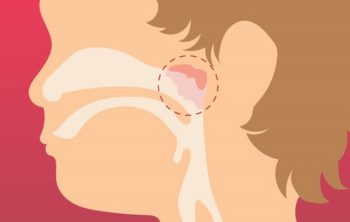Why Tonsils removed? It is not uncommon for children to undergo a tonsillectomy. In fact, according to the American Academy of Otolaryngology – Head and Neck Surgery, more than 500,000 people in the United States have their tonsils removed annually. But why? What are the benefits of removing someone’s tonsils? And what should parents expect after surgery? This blog post will answer those questions and more.
Contents
What are tonsils?
The tonsils are two masses of tissue located in the back of the mouth, one on either side. They are part of our immune system and help us fight germs that cause illness. You can think of the tonsils as germ processing centers. They help our bodies learn to recognize different kinds of germs so that we can fight them better.
The tonsils can become inflamed and swollen, which is called tonsillitis. Tonsillitis is usually caused by a viral infection, but it can also be caused by a bacterial infection. Symptoms of tonsillitis include sore throat, fever, trouble swallowing, and enlarged lymph nodes in the neck. Treatment for tonsillitis depends on the underlying cause. Viral infections usually go away on their own, while bacterial infections may require antibiotics. In some cases, the tonsils may need to be removed surgically.
What Is a Tonsillectomy?
A tonsillectomy is a surgical procedure to remove the tonsils. The tonsils are two small glands located at the back of the throat, one on each side. They are part of the lymphatic system, which helps fight infection.
Tonsillectomies are performed for various reasons, including repeated episodes of tonsillitis (inflammation of the tonsils), enlarged tonsils that interfere with breathing, and certain types of cancer.
In most cases, a tonsillectomy is a relatively simple and straightforward procedure. It is usually performed under general anesthesia, which means you will be asleep during the surgery. The surgeon will make small incisions on either side of your throat and remove the tonsils. The incisions are usually closed with stitches or staples, which will need to be removed in 7-10 days.
After the surgery, you will likely have some pain and swelling in your throat. You may also have a sore throat, difficulty swallowing, and a hoarse voice. These symptoms should improve within a week or two. In the meantime, you can help relieve your symptoms by taking pain medication and drinking plenty of fluids.
If you or your child is having a tonsillectomy, it is important to follow your surgeon’s instructions carefully to ensure a successful recovery. With proper care, most people heal without any problems.
Why Tonsils Removed?
There are a few reasons why a tonsillectomy, or the removal of tonsils, may be recommended for children. One common reason is if your child has chronic tonsillitis, or inflammation of the tonsils. This can cause frequent sore throats, fevers, and difficulty swallowing. If your child has had multiple courses of antibiotics without relief, a tonsillectomy may be recommended.
Another reason for tonsillectomy in children is if they have sleep-disordered breathing. This means that their sleep is disrupted due to enlarged tonsils blocking their airway. This can lead to loud snoring and difficulty staying asleep. A tonsillectomy can improve sleep quality in these children.
Lastly, some children are born with tonsil abnormalities that require removal. For example, if the tonsils are fused together (known as synechiae), a tonsillectomy may be necessary.
If you have any questions or concerns about tonsillectomy in children, be sure to talk to your child’s doctor. They will be able to provide you with more information and help you make the best decision for your child’s health.
Before the Tonsillectomy:
The night before surgery, you won’t be allowed to eat or drink anything after dinner — not even water. That’s because your stomach must be empty for surgery.
You’ll also pack your suitcase if you’re staying overnight in the hospital and bring anything you want to have with you. If you have a special stuffed animal or blanket, bring it. It’s nice to have something that reminds you of home when you’re in the hospital.
You’ll probably go to the hospital on the day of your surgery. You’ll check in and get a plastic bracelet that has your name on it. Then, you’ll meet the nurses and other hospital staff who will be taking care of you. They may give you a sedative to help you relax.
You’ll be taken into the operating room, where the surgeon will make small cuts in your throat to remove your tonsils. Tonsillectomy usually takes about 30 minutes. You’ll be asleep during the surgery and won’t feel any pain.
After the surgery, you’ll be taken to a recovery room, where you’ll wake up from the anesthesia. You may have a sore throat and a feeling like you need to vomit. You’ll also have some bleeding from your throat. The nurses will monitor you closely and give you medicine to help with the pain and nausea.
You can go home the same day or stay overnight in the hospital, depending on how your child is feeling. It’s important to rest for the first few days after surgery. Your child will probably need to take it easy for a week or two and won’t be able to go to school or daycare. The doctor will give you more instructions about when your child can return to his or her normal activities. Tonsillectomies are usually very successful. But, like with any surgery, there are some risks, such as bleeding and infection. Be sure to talk to your doctor about all of the risks before the surgery.
Talking Tonsillectomies:
Tonsillectomies are a common surgery for children, and it’s nothing to worry about. Here’s what you need to know.
A tonsillectomy is when the tonsils are removed. Tonsils are two small lumps of tissue at the back of the throat. They’re part of the lymphatic system, which helps fight infection.
Most tonsillectomies are done because of recurrent infections, like strep throat. Tonsillectomies can also help with sleep apnea or snoring issues.
The surgery is usually done as an outpatient procedure, meaning your child won’t have to stay in the hospital overnight. But it will require a trip to the operating room, so your child will be given anesthesia to help them sleep through the surgery.
The surgery itself is quick, taking only about 20 minutes. And recovery is usually pretty easy too. Your child may be a little sleepy and dizzy at first, but they’ll be back to their normal selves in no time.
So if your child needs a tonsillectomy, don’t worry. It’s a common procedure with a quick recovery.
What Happens After?
After a tonsillectomy, it’s important for children to drink lots of fluids. Drinking will help them feel better and recover more quickly. Some kids may need to stay in the hospital overnight, while others can go home the same day as their surgery.
In the days and weeks following surgery, children should take it easy and avoid strenuous activities. Light activity is fine, but if the doctor recommends staying home from school, children should talk to their teacher about getting homework to do while they recover at home.
It’s important to drink lots of fluids while you’re recovering from a tonsillectomy. This will help your body heal and prevent dehydration. Your doctor may recommend that you stick to drinking clear liquids or soft foods for a few days after the surgery. Once you’re feeling better, you can gradually start eating more solid foods. Most people recover from a tonsillectomy within a week or two. And then you’ll be able to go back to your normal activities! Be sure to tell your friends all about your surgery when you see them again.
How are the Tonsils Removed?
The tonsils are removed through the mouth and there are no visible scars following surgery. In most cases, a conventional tonsillectomy is performed under general anesthesia. General anesthesia is very safe and your child will be carefully monitored during the procedure.
During a conventional tonsillectomy, the surgeon will make an incision in the middle of each tonsil. The tonsils are then removed and any remaining tissue is cauterized (burned). The incisions are then closed with stitches.
The other type of tonsillectomy is called a partial or subtotal tonsillectomy. In this procedure, only part of the tonsils are removed. This approach may be used if the tonsils are only moderately enlarged.
A partial tonsillectomy is generally less painful than a conventional tonsillectomy and has a shorter recovery time. However, it is important to note that the tonsils can grow back after a partial tonsillectomy. If this happens, another surgery may be necessary to remove them again.
After either type of tonsillectomy, your child will need to stay in the hospital for one or two nights. During this time, they will be closely monitored for any complications. Complications from tonsillectomy are rare but can include bleeding, infection, and reactions to the anesthesia.
Most children recover from tonsillectomy without any major problems and are back to their normal activities within two weeks.
If you are considering having your child’s tonsils removed, be sure to discuss all of the risks and benefits with your child’s doctor. Tonsillectomy is a very common procedure but it is not right for every child. The decision to have the surgery should be made carefully after all other options have been considered.
Conventional Tonsillectomy:
A conventional tonsillectomy involves the complete removal of both tonsils. This type of surgery is performed under general anesthesia in the operating room. The surgeon will make an incision in the middle of each tonsil. The tonsils are then removed and any remaining tissue is cauterized (burned). The incisions are then closed with stitches.
Most children recover from a conventional tonsillectomy without any major problems and are back to their normal activities within two weeks. However, there is a risk of complications such as bleeding, infection, and reactions to the anesthesia. Complications from tonsillectomy are rare but can occur.
If you are considering having your child’s tonsils removed, be sure to discuss all of the risks and benefits with your child’s doctor. Tonsillectomy is a very common procedure but it is not right for every child. The decision to have the surgery should be made carefully after all other options have been considered.
Partial or Subtotal Tonsillectomy:
A partial or subtotal tonsillectomy involves the removal of only part of the tonsils. This type of surgery may be used if the tonsils are only moderately enlarged.
A partial tonsillectomy is generally less painful than a conventional tonsillectomy and has a shorter recovery time. However, it is important to note that the tonsils can grow back after a partial tonsillectomy. If this happens, another surgery may be necessary to remove them again.
After a partial or subtotal tonsillectomy, your child will need to stay in the hospital for one or two nights. During this time, they will be closely monitored for any complications. Complications from tonsillectomy are rare but can include bleeding, infection, and reactions to the anesthesia.
Most children recover from a partial or subtotal tonsillectomy without any major problems and are back to their normal activities within two weeks.
Electrocautery:
A tonsillectomy is a surgical procedure to remove the tonsils. It can be done with a variety of instruments, but we prefer a device that uses electricity to cut the tonsils out and stop bleeding at the same time (an electrocautery). The greatest benefit of a conventional tonsillectomy is that all of the tonsil tissue is removed and therefore won’t grow back. The biggest problem with conventional tonsillectomy is that it hurts for 7 to 10 days following surgery which makes it hard to eat and drink for awhile.
The Intracapsular Tonsillectomy:
The intracapsular tonsillectomy is a type of tonsillectomy, which involves removing most of the tonsil tissue but leaving a small amount of tonsil tissue behind to protect the side of the throat. This typically results in much less pain after surgery and a shorter recovery. However, there is the possibility that in time, tonsils will grow back and possibly become large enough to cause symptoms again. This type of tonsillectomy is usually recommended for very young children with sleep apnea. The intracapsular tonsillectomy is not appropriate for children with lots of strep throat or tonsillitis.
If you are considering having your child’s tonsils removed, be sure to discuss all of the risks and benefits with your child’s doctor. Tonsillectomy is a very common procedure but it is not right for every child. The decision to have the surgery should be made carefully after all other options have been considered.
Removing Tonsils and Adenoids:
For some children, their tonsils and adenoids are more trouble than they’re worth. These two clusters of tissue help filter out harmful bacteria and viruses that are breathed in, protecting the body from infection. However, sometimes they can become enlarged and cause problems such as difficulty breathing or sleeping, snoring, sleep apnea, or recurrent infections.
In these cases, a doctor may recommend removing the tonsils and/or adenoids (a procedure called a tonsillectomy or adenoidectomy). While this may sound scary, it is actually a very common and safe procedure that can provide relief from these bothersome symptoms. If your child is having problems with their tonsils or adenoids, talk to your doctor to see if a tonsillectomy or adenoidectomy is right for them.
1. They are affecting your child’s sleep:
If your child has sleep apnea, a tonsillectomy may be recommended. This is a procedure to remove the tonsils, which are two small growths in the back of the throat.
The adenoids are also often removed at the same time. The adenoids are located behind the nose and are part of the lymphatic system.
A tonsillectomy is usually done as an outpatient procedure, which means your child can go home the same day. The surgery takes about 30 minutes.
Dr. Georgopoulos says she will also perform an endoscopy prior to the tonsillectomy/adrenalectomy to do a thorough evaluation of the child’s airway while they are sleeping.
Symptoms of sleep apnea in children can have a significant impact on their daily lives. In addition to snoring, pauses in breathing followed by a ‘catch-up’ breath, restless sleep, sweating, tiredness and even bed wetting are all common symptoms of sleep apnea.
These effects often carry over into the waking hours, where children may show signs of restless or erratic behavior, irritability and poor coping skills. Thankfully, removing tonsils and adenoids to help correct airway obstruction is an effective treatment for many children suffering from sleep apnea. After this procedure, many patients no longer experience any symptoms of sleep apnea.
For children 3 and older, the surgeon usually removes both tonsils and adenoids. On occasion we will address tonsils in children younger than 2, and we will do what is called an intracapsular tonsillectomy, which is partial removal of the tonsil tissues.
After the surgery, your child will need to rest and recover at home. They will likely have some pain and discomfort, so it is important to give them pain medication as prescribed by their doctor. They will also need to eat soft foods and drink plenty of fluids.
2. They are causing recurring throat infections:
If your child has frequent throat infections that include a fever and swollen lymph nodes lasting for three or four days, talk with your doctor about whether a tonsillectomy and adenoidectomy would help.
Recurring throat infections mean defenses can’t keep up. Tonsils help keep bacteria and viruses out but, because they are one of the body’s first lines of defense, they are sometimes overwhelmed and infected themselves.
A tonsillectomy is a surgery to remove the tonsils. An adenoidectomy is a surgery to remove the adenoids. The adenoids are located behind the nose, above the roof of the mouth.
Your child may need a tonsillectomy and adenoidectomy if:
- Your child has had seven or more throat infections in one year.
- Your child has had five or more throat infections in each of the past two years.
- Your child has had three or more throat infections in each of the past three years.
- Your child’s tonsils are so large that they block the airway. This can cause snoring or sleep apnea (when breathing stops for short periods during sleep).
- Infections do not go away with antibiotics.
- Infections keep coming back even after the tonsils have been removed. This is called recurrent tonsillitis.
If your child has any of these problems, the doctor may recommend a tonsillectomy and adenoidectomy. During the surgery, the doctor will remove the tonsils and adenoids. The surgery is usually done as day surgery, which means your child can go home the same day.
After a tonsillectomy and adenoidectomy, your child may have a sore throat for one to two weeks. Your child may also have some trouble swallowing or experience pain when opening his or her mouth wide. These problems should get better within two weeks.
Your child will need to take it easy for at least two weeks after surgery. This means no roughhousing, contact sports, or swimming. It is important to follow the doctor’s instructions during this time so that your child can heal properly. If you have any questions or concerns, be sure to talk with your child’s doctor.
How should I take care of my child after surgery?
After your child has a tonsillectomy, it is important to encourage them to drink plenty of liquids. Keeping the throat moist decreases discomfort and prevents dehydration (a dangerous condition in which the body does not have enough water).
Give your child pain medication as prescribed by your doctor. Give it before bedtime and first thing after waking in the morning. It should be easier for your child to eat and drink about 30 minutes after taking the pain medicine so these are the best times to encourage drinking and eating.
If your child has a tonsillectomy, they may be prescribed pain medication to help manage any discomfort. However, it’s important not to give your child any medication that hasn’t been specifically recommended or prescribed by a doctor.
Recent studies have not shown any increased risk of bleeding when children take Children’s Motrin (ibuprofen) after a tonsillectomy. If you’re unsure about which medications are safe for your child to take, please consult with their doctor.
Antibiotics are no longer routinely prescribed after a tonsillectomy. In cases where children have trouble taking pain medication or are vomiting, pain medicine suppositories may be an option. Consult with your child’s doctor to see if this is a suitable option.
You can place a humidifier or cool mist vaporizer next to your child’s bed at night. Keeping the air your child breathes moist will help decrease pain and help prevent dehydration.
Prevent your child from coming into contact with other people who have colds, flu, or infections. If possible, have these people wear a mask when they are around your child.
What can my child eat and drink after surgery?
After a tonsillectomy, it’s important to offer your child cool liquids and soft foods. For the first day or two, try to stick with apple juice, water, Popsicles, Jell-O, and other soft drinks. You can also give them yogurt, pudding, and ice cream.
As your child starts to feel better, you can add in other foods like cooked cereal, scrambled eggs, mashed potatoes, and pasta. Just be sure that they’re staying hydrated by drinking plenty of fluids.
You’ll want to avoid any foods that are crunchy or have hard edges, like corn chips, pretzels, and popcorn. It’s also best to stay away from anything else that might be tough to eat, like steak or raw vegetables.
How does surgery help?
Though removal of tonsils and adenoids is a common outpatient surgery for children, it is still important to understand what you can expect before, during, and after the procedure.
Your child will likely be given either Tylenol or ibuprofen to help manage pain, and will Recovery usually takes place within seven to 10 days. It is not uncommon for your child to experience some swelling in the throat, as well as some discomfort when swallowing. However, these symptoms should subside relatively quickly.
In some cases, surgery may also help with other issues such as nasal obstructions or swallowing difficulties. If your child has tonsil stones (calcified material in the tonsils), removal of the tonsils may also be recommended. Additionally, if your child has a peritonsillar abscess (when infection spreads beyond tonsils), surgery may be the best course of action.
Overall, though there can be some short-term discomfort associated with the surgery, it is generally well-tolerated by children and provides long-term relief from various issues. If you have any questions or concerns, be sure to speak with your child’s doctor prior to the procedure.
Read more: Food Poisoning In Children: Symptoms, Diagnose And Treatment







